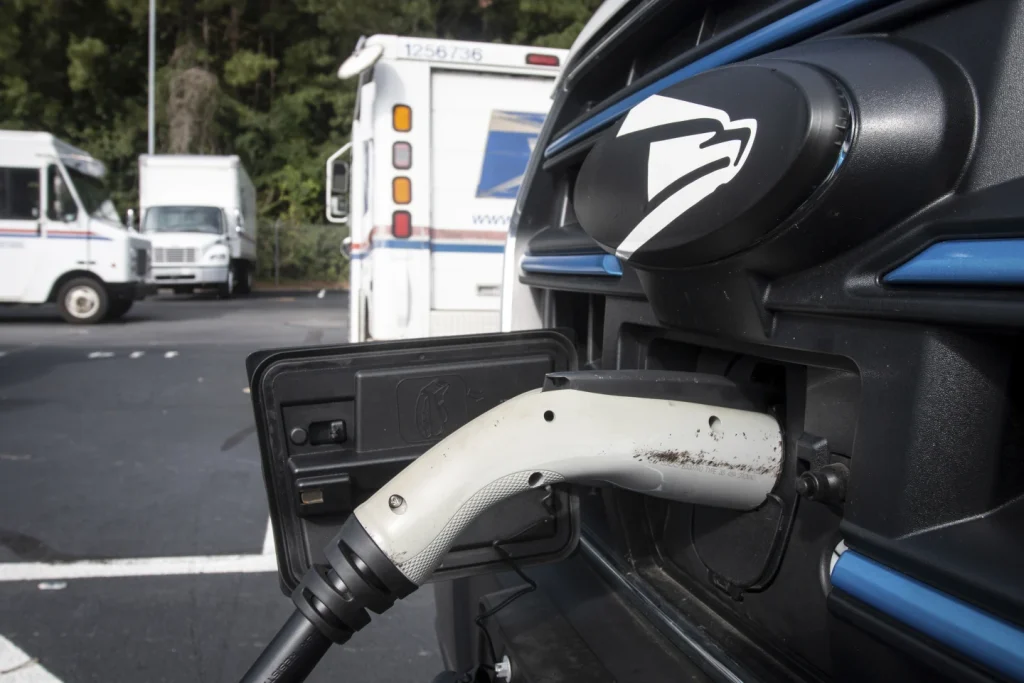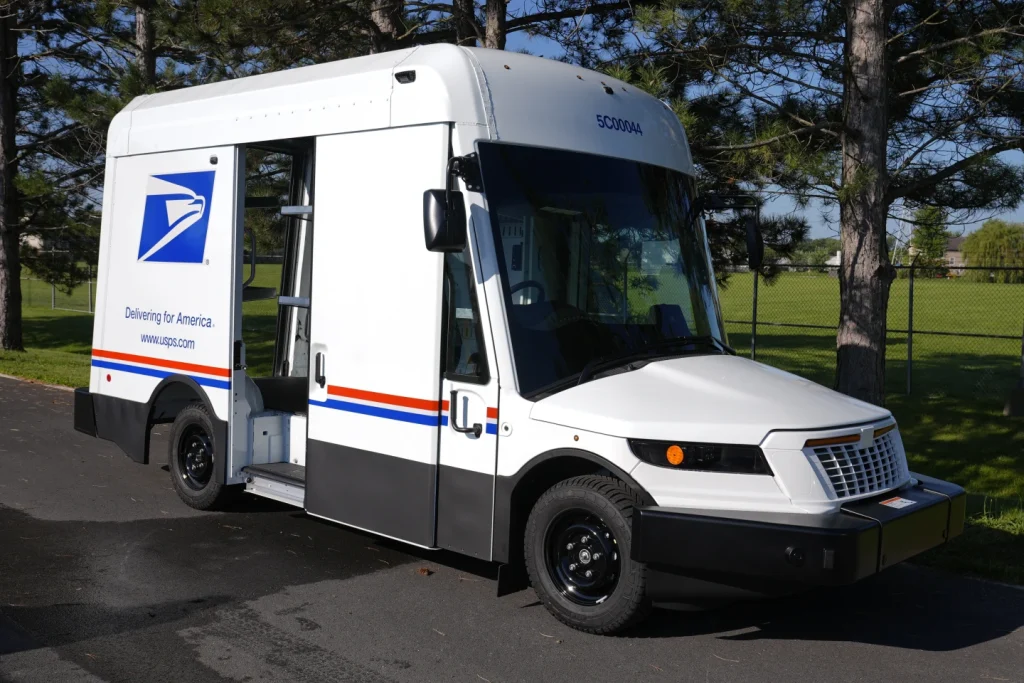In an era defined by rapid technological advancements and evolving consumer preferences, the United States Postal Service (USPS) stands at a vital crossroads. The recent deployment of the Next Generation Delivery Vehicles (NGDV), heralded as a significant transformation in postal service operations, marks a pivotal moment for the agency.
While the design of these new vehicles may not win any beauty contests, their functional superiority over the aging Grumman Long Life Vehicles (LLVs) underscores a crucial transition towards improved efficiency, safety, and sustainability within the postal delivery system.
The visual aesthetics of the NGDVs, characterized by tall, ungainly structures, vast windshields, and pronounced hoods, may be subject to criticism from casual observers.
Postal worker Avis Stonum aptly notes that the design does not prioritize appearance; rather, it reflects a commitment to utility and safety.
Despite their unconventional looks, the NGDVs are receiving enthusiastic responses from postal workers who have long contended with the limitations of the LLVs, which have been in service since 1987.
The LLVs, while durable, proved to be cost-ineffective and inadequate in terms of modern safety features. With a fuel efficiency of a mere nine miles per gallon, these existing vehicles were not only noisy and uncomfortable but also hazardous, as evidenced by the alarming statistic of nearly 100 vehicles catching fire last year.
The NGDVs are being manufactured by Oshkosh Defense in South Carolina and represent a concerted effort to modernize the fleet of the USPS in alignment with contemporary needs.
The introduction of features such as improved interior space, 360-degree cameras, collision sensors, and air conditioning—which has been a standard in the automotive industry for decades—speaks volumes about the shift in focus towards the comfort and safety of postal carriers.
For instance, with the ability to stand upright in the driver’s compartment, taller postal workers, like Stonum, can now operate the vehicles without the discomfort that characterized the LLVs.
The implementation of advanced safety features, such as anti-lock brakes and blind-spot monitoring, further enhances operational safety and minimizes the risk of accidents during delivery.
Moreover, the NGDVs reflect a significant leap forward in addressing the ergonomic and safety concerns that postal workers have raised.
Richard Burton, another postal worker, emphasizes that the larger payload area facilitates the handling of bigger packages and significantly reduces the risk of back pain—an issue common among workers confined to cramped spaces.
Such improvements enhance not just the overall efficiency of postal operations but also the welfare of the employees who are central to delivering mail and packages across the nation.
In the broader context, the rollout of the NGDVs is part of a comprehensive 10-year, $40 billion transformation plan outlined by Postmaster General Louis DeJoy.
The initiative encompasses more than just the replacement of vehicles; it includes the renovation of aging facilities, a wholesale overhaul of processing and transportation networks, and the implementation of systemic changes geared toward revitalizing the USPS amid an evolving postal landscape that has seen a marked increase in package delivery demand.
However, this transition has not been without controversy. The initial plans to primarily introduce gas-powered vehicles raised significant concerns from environmental advocates, who argued that the USPS should prioritize electrification of its fleet to mitigate tailpipe emissions and align with broader efforts to combat climate change.
DeJoy’s initial stance faced public backlash, prompting legal challenges that sought to push for a more environmentally friendly fleet.

In a dialogue with President Joe Biden’s environmental advisers, DeJoy negotiated an increase in the number of electric vehicles included in the first order, highlighting the USPS’s evolving commitment to environmental sustainability in response to public pressure and legislative priorities.
As the fleet of NGDVs expands to approximately 60,000 vehicles, with a significant proportion being electric models, the implications for the USPS are profound.
These vehicles will serve as a tangible representation of the agency’s efforts to adapt to the future while maintaining essential services across diverse geographic locales, from the Northeast to Hawaii.
Their deployment marks a significant step towards modernizing the USPS, potentially enhancing operational efficiency, lowering long-term maintenance costs, and improving service delivery.
In December 2022, Postmaster General Louis DeJoy announced a significant initiative wherein the United States Postal Service (USPS) plans to acquire a total of 106,000 vehicles by the year 2028, a move that has drawn considerable attention and acclaim among environmental advocates and policy analysts alike.
This ambitious procurement strategy encompasses an impressive allocation of 60,000 next-generation vehicles, with a commitment that 45,000 of these will be electric models, complemented by an additional 21,000 electric vehicles from various manufacturers.
DeJoy has further pledged that the USPS will transition to an entirely electric fleet for all new vehicle purchases starting in 2026, a declaration that aligns with contemporary efforts to combat climate change.
Katherine García of the Sierra Club, an environmental organization that has actively pursued legal recourse against the Postal Service regarding its previous vehicle procurement strategies, lauded this decision as a critical step forward, stating, “With the climate crisis at our doorsteps, electrifying the U.S. government’s largest fleet will deliver the progress we’ve been waiting for.”
The transformative impact of this initiative is underscored by the USPS’s projection of a 40% reduction in carbon emissions by 2030, a target to be achieved through the integration of electric vehicles, optimized mail routes to reduce tailpipe emissions, and various operational enhancements that are also anticipated to yield cost savings.

This summer, the completion of the Postal Service’s environmental endeavors was marked by its receipt of the Presidential Federal Sustainability Award from the White House, a recognition that DeJoy described as the culmination of “an interesting journey.”
He emphasized that this honor not only acknowledges the agency’s capacity to navigate multifaceted challenges—ranging from operational and financial hurdles to technical and political complexities—but also serves as a testament to the USPS’s commitment to sustainability and progress.
In addressing these developments, DeJoy remarked, “It comes from forging forward. Keep moving,” encapsulating the agency’s resolve to continue advancing towards a more sustainable future in the face of pressing environmental concerns.
